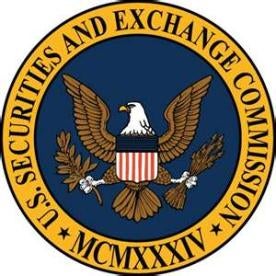Important Pre- and Post-Annual Meeting Planning Considerations
In January 2011, the Securities and Exchange Commission adopted final rules implementing provisions of the Dodd-Frank Wall Street Reform and Consumer Protection Act relating to shareholder approval of executive compensation. Specifically, the SEC amended the Securities Exchange Act of 1934 by adding provisions to Section 14A, which, among other things, require public companies to conduct a shareholder advisory vote to approve the compensation of the company’s named executive officers (the “Say-on-Pay Vote”), and conduct a separate shareholder advisory vote to determine how often the Say-on-Pay Vote should be held (i.e., every year, every other year or every three years) (the “Say-on-Frequency Vote”).
Following the first Say-on-Frequency Vote in 2011, most companies implemented an annual Say-on-Pay Vote. The rules further require that shareholders be given the opportunity to weigh in on the frequency of the Say-on-Pay Vote “no later than the annual or other meeting of shareholders held in the sixth calendar year after the immediately preceding vote.” Therefore, the 2017 proxy season will be the second time, for most companies, that the Say-on-Frequency Vote will take place.This Client Alert sets forth the important considerations to take into account in planning for any required 2017 Say-on-Frequency Vote.
Mechanics of the Say-on-Frequency Vote
-
Proxy Statement: Pursuant to Item 24 of Schedule 14A, companies must disclose in their definitive proxy statements the following:
-
That they are providing shareholders with a Say-on-Frequency Vote as required under Section 14A of the Exchange Act;
-
A brief explanation that the Say-on-Frequency Vote is non-binding;
-
The current frequency of the Say-on-Pay Vote; and
-
When the next Say-on-Pay Vote will occur.
-
-
Companies may also include a recommendation for the frequency of the Say-on-Pay Vote, as discussed below. While the Say-on-Pay Vote needs to be presented in the form of a resolution, the SEC has made clear that the Say-on-Frequency Vote does not need to be presented in the form of a resolution.1
-
Proxy Card: The form of proxy, or proxy card,must provide shareholders with four voting choices for the Say-on-Frequency Vote.Shareholders must (1) be permitted to abstain from voting, or have the option of voting in favor of the Say-on-Pay Vote being held (2) every year, (3) every two years or (4) every three years. If a company makes a frequency recommendation in its proxy statement, it may vote uninstructed proxy cards in accordance with such recommendation if its proxy card (i) permits abstentions and (ii) contains language in bold specifying how uninstructed shares will be voted.
Background Relevant to Recommending a Frequency Preference
In the first Say-on-Frequency Vote in 2011, a large majority of shareholders favored an annual Say-on-Pay Vote. More recently, according to a survey conducted by Institutional Shareholder Services of over 400 organizations,2 66% of investor respondents indicated a preference for an annual Say-on-Pay Vote, while 11% and 7% preferred that the Say-on-Pay Vote be held every two years and every three years, respectively. The remaining investor respondents, approximately 17%, indicated that their frequency preference depends on certain factors, including the presence or absence of problematic executive pay practices and the financial performance of the company.3
While an annual Say-on-Pay Vote has become the most widely-adopted standard,4 this may not be the appropriate choice for all companies. There are a number of factors that boards of directors should take into account when considering which vote frequency to recommend, including:
-
Shareholder support for executive compensation since the last Say-on-Frequency Vote;
-
Shareholder engagement findings, and other shareholder feedback;
-
Individual Say-on-Frequency policies and positions of a company’s major shareholders (since policies can vary from institution to institution); and
-
Say-on-Frequency recommendations and practices of peer companies.
Post-Annual Meeting Planning Considerations
-
Disclosure of Voting Results: Companies are generally required to disclose the results of the Say-on-Frequency Vote within four business days following the annual meeting of shareholders in a Current Report on Form 8-K (Item 5.07). The voting results may also be reported in a periodic report (such as an Annual Report on Form 10-K or Quarterly Report on Form 10-Q) that is capable of being filed on or before the date that the Form 8-K would otherwise be due.
-
This disclosure must state the number of votes cast for each frequency option (one year, two years and three years) and also the number of abstentions. The number of broker non-votes does not need to be provided.5
-
Disclosure of Frequency Determination: Since the Say-on-Frequency Vote is not binding, companies are further required to disclose the determination of the board of directors with respect to the frequency of the Say-on-Pay Vote. If the board makes a frequency determination at the board organizational meeting immediately following the annual meeting of shareholders, this can be disclosed in the same Form 8-K filed to disclose the voting results. In this case, advance preparation and board book briefing is recommended. However, companies do not need to rush into making this decision, particularly if there are circumstances where a change in frequency is being considered seriously. Pursuant to Item 5.07(d) of Form 8-K, companies have up to 150 calendar days after the annual meeting of shareholders to disclose their frequency determination, but in no event can this disclosure be made later than 60 calendar days prior to the deadline for shareholder proposals for the next year’s annual meeting of shareholders (the “Determination Disclosure Deadline”).
-
If the voting results were disclosed in a Form 8-K without a frequency determination, the frequency determination must be later disclosed by amending that Form 8-K (filing a Form 8-K/A), rather than filing a new Form 8-K. If the voting results were disclosed in a periodic report, then a Form 8-K should be filed to disclose the frequency determination (rather than an amendment to the periodic report).
-
Late Filings and Form S-3 Eligibility: It is important to be mindful of all of the aforementioned requirements in planning next steps following the annual meeting of shareholders. The board of directors may need to convene to determine the frequency of the Say-on-Pay Vote if a board meeting is not otherwise scheduled to occur in the current board calendar before the Determination Disclosure Deadline. Failure to comply with these requirements could have serious consequences.
If a company fails to timely disclose the results of the Say-on-Frequency Vote or the ultimate frequency determination made by its board of directors, it could be ineligible, for a period of 12 months, to use Form S-3 to access the capital markets (unless it has been granted a Form S-3 eligibility waiver from the SEC, as discussed below).
Form S-3 is only available to companies that meet certain eligibility requirements, including the requirement to have timely filed all required reports under the Exchange Act during the 12 calendar months and any portion of a month immediately before the filing of the registration statement. While the instructions to Form S-3 indicate that the late filing of certain Form 8-Ks will not impact a company’s eligibility to use Form S-3,6 this exception does apply to the required disclosure of the Say-on-Frequency voting results and the frequency determination of the company’s board of directors pursuant to Item 5.07 of Form 8-K.
After the first Say-on-Frequency Vote in 2011, most companies timely filed Form 8-Ks to disclose the voting results, but hundreds failed to timely amend their Form 8-Ks to disclose the ultimate determination of the board of directors with respect to Say-on-Frequency. Speaking at a conference in 2012, Meredith Cross, then director of the SEC’s Division of Corporate Finance, said “[w]e said in the release [companies] need to do this, but we think they just forgot.” Fortunately for many of these companies, Cross indicated in her remarks in that the SEC would be willing to grant Form S-3 eligibility waivers at that time where the frequency determination was consistent with the outcome of the Say-on-Frequency Vote.7
In contrast, companies preparing for their second Say-on-Frequency Vote this year should note that the staff of the SEC’s Division of Corporate Finance could look less favorably upon waiver requests than they did in 2011 and 2012. While the Staff displayed a willingness to grant such Form S-3 eligibility waivers then, during the first year of implementation of the Say-on-Frequency rules, then-Director Cross further commented in her 2012 remarks that the failure of many companies to amend their Form 8-Ks following the first Say-on-Frequency Vote “shouldn’t be a recurring problem.” From this, it would appear that that the Staff expects companies to comply with applicable disclosure requirements this time around. Companies should bear in mind that the Staff’s general position on Form S-3 eligibility waivers – that they are to be granted “only under very limited circumstances.”8 Therefore, it is likely that a failure in 2017 to timely comply with the Say-on-Frequency disclosure requirements could result in the loss of Form S-3 eligibility.
Companies Not Required to Hold a Say-on-Frequency Vote in 2017
There are some companies that do not need to address Say-on-Frequency this year. When the SEC adopted its final rules regarding Say-on-Pay and Say-on-Frequency in 2011, smaller reporting companies were exempt from holding a Say-on-Pay or Say-on-Frequency Vote until the first annual or other meeting of shareholders occurring on or after January 21, 2013, and therefore these companies would not be required to hold a frequency vote until the sixth anniversary of the first vote (e.g., in 2019). In addition, emerging growth companies (“EGCs”) created by the Jumpstart Our Business Startups Act of 2012 are exempt from holding a Say-on-Pay or Say-on-Frequency Vote until after they cease to be classified as EGCs. Other companies that will not need to hold a Say-on-Frequency Vote in 2017 include those that held a Say-on-Frequency Vote after 2011, such as those who became public or assumed reporting obligations after 2011. For these companies, Say-on-Frequency will not be on the ballot again until the sixth anniversary of the previous vote.
Impact of New Administration Efforts on These Rules
President Donald Trump signed an executive order on February 3, 2017 potentially setting in motion efforts to roll back parts of Dodd-Frank (the “Order”). The Order, among other things, directed the Secretary of the Treasury to consult with the heads of the member agencies of the Financial Stability Oversight Council (including the SEC)9 and report to the President within 120 days (and periodically thereafter) on the extent to which existing laws and regulations “ … inhibit Federal regulation of the United States financial system in a manner consistent with the Core Principles.”10 In light of the fact that this directive requires input from nine member agencies and involves an initial report of findings to the President in early June of 2017, it is highly unlikely that the that the rules and compliance considerations described in this Alert will be impacted during the 2017 proxy season.
Kara Sharkey assisted in the preparation of this article.
1 SEC Division of Corporate Finance Compliance and Disclosure Interpretations: Exchange Act Rules Question and Answer 169.04, available at https://www.sec.gov/divisions/corpfin/guidance/exchangeactrules-interps.htm.
2 See Institutional Shareholder Services 2016-2017 Global Policy Survey: Summary of Results, published September 29, 2016, available at https://www.issgovernance.com/file/policy/2016-2017-iss-policy-survey-results-report.pdf.
3 The survey results for non-investor respondents were somewhat different – 42% preferred an annual Say-on-Pay Vote while 7% preferred holding this vote every two years and 19% every three years. A larger percentage of non-investors responded “It depends on the company” (31% as opposed to 17% of investor respondents).
4 According to a recent survey, 82% of Russell 3000 companies held an annual Say-on-Pay Vote. See U.S. Executive Pay Shareholder Votes: 2015 Results for the Russell 3000, published by Willis Towers Watson in February 2016.
5 SEC Division of Corporate Finance Compliance and Disclosure Interpretations: Exchange Act Form 8-K Question and Answer 121A.03, available at https://www.sec.gov/divisions/corpfin/guidance/8-kinterp.htm#121a-03.
6 Specifically, late filings of Form 8-Ks solely pursuant to Items 1.01, 1.02, 2.03, 2.04, 2.05, 2.06, 4.02(a) or 5.02(e) of Form 8-K will not impair a company’s Form S-3 eligibility.
7 Emily Chasan, Companies ‘Forgot’ Say-On-Pay Filings: SEC, The Wall Street Journal, available at http://blogs.wsj.com/cfo/2012/02/27/companies-forgot-say-on-pay-filings-sec/.
8 SEC Division of Corporate Finance Compliance and Disclosure Interpretations: Securities Act Forms Question and Answer 101.01, available at https://www.sec.gov/divisions/corpfin/guidance/safinterp.htm.
9 The Financial Stability Oversight Council is a nine member body that is comprised of the following member agencies: (1) the Board of Governors of the Federal Reserve System, (2) the Commodity Futures Trading Commission, (3) the Federal Deposit Insurance Corporation, (4) the Federal Housing Finance Agency, (5) the National Credit Union Administration, (6) the Office of the Comptroller of the Currency, (7) the SEC, (8) the Treasury Department and (9) the Consumer Financial Protection Bureau.
10 The Order provides that “ It shall be the policy of my Administration to regulate the United States financial system in a manner consistent with the following principles of regulation, which shall be known as the Core Principles:
-
empower Americans to make independent financial decisions and informed choices in the marketplace, save for retirement, and build individual wealth;
-
prevent taxpayer-funded bailouts;
-
foster economic growth and vibrant financial markets through more rigorous regulatory impact analysis that addresses systemic risk and market failures, such as moral hazard and information asymmetry;
-
enable American companies to be competitive with foreign firms in domestic and foreign markets;
-
advance American interests in international financial regulatory negotiations and meetings;
-
make regulation efficient, effective, and appropriately tailored; and
-
restore public accountability within Federal financial regulatory agencies and rationalize the Federal financial regulatory framework.”








 i
i

